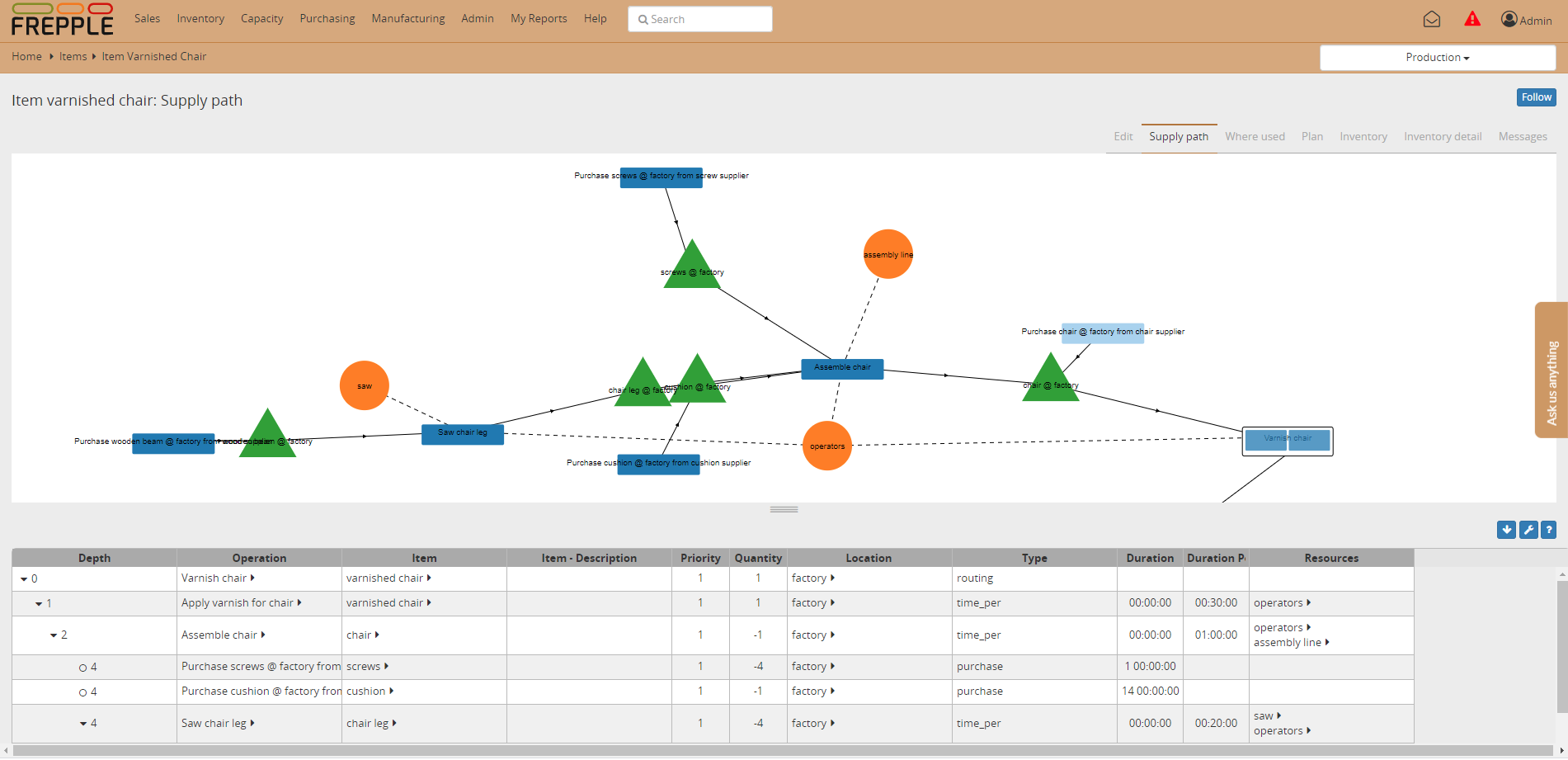Manufacturing demo dataset
This dataset demonstrates the functionalities used for manufacturing supply chains.
This company has a factory producing tables and chairs.
The finished goods have a bill of material with subassemblies and raw materials.
Machine and operators are required to perform the manufacturing operations.
Finished good are shipped to a warehouse and 2 shops.
Check out the supply path of an item to visualize the supply chain.

The screens that distribution planners will use on a daily basis are:
- In this screen the planner and the sales team work on reviewing and updating the sales forecast for all items, locations and customers.
Actions on this screen:
Review the forecast at different levels.
Adjust forecast when the statistical computed isn’t complete.
Adjust exceptional demand peaks (aka demand outliers) from the demand history.
- The actions on this screen are similar to the forecast editor.
Extra actions on this screen:
Export the forecast in a spreadsheet format.
Import forecast data from a spreadsheet (eg input collected from a customer).
- This screen is a Gantt chart where the planner can interactively adjust the plan.
Actions on this screen:
Review and analyze the task list on all resources. The color codes allow visual and intuitive review of the plan.
- Drag&drop manufacturing orders to a new time.The system will propagate your changes to preceding and succeeding steps.
Drag&drop manufacturing orders to alternate resources.
- This screen gives a graphical overview of the loading of all resources.
Actions on this screen:
- Evaluate the loading on all resources and analyze bottlenecks.Identifying bottlenecks well in time allows the planner to take actions: schedule overtime, outsource production, buy extra machine, …
- This screen gives an overview of all manufacturing orders planned on each resource.
Actions on this screen:
Display the to-do task list for each resource.
-
Actions on this screen:
- Review sales orders that will be shipped late.This info can be used to reprioritize urgent demands, or to communicate the delivery delay to your customer.
-
Actions on this screen:
- Identify critical items where supply can’t keep with the demand.The planner analyzes the root causes and bottlenecks causing the backlog.
- This screen provides an overview of all manufacturing orders - which can be either existing already in your ERP, either newly proposed by frePPLe.
Actions on this screen:
Review newly proposed manufacturing orders (i.e. status = “proposed”) and send them to your ERP.
Generate a todo-list for operators and/or machines.
Review existing manufacturing orders (i.e. status = “confirmed” or “approved”) that are overdue and/or need expediting.
- This screen provides an overview of all purchase orders - which can be either existing already in your ERP, either newly proposed by frePPLe.
Actions on this screen:
Review newly proposed purchase orders (i.e. status = “proposed”) and send them to your ERP.
Review existing purchase orders (i.e. status = “confirmed” or “approved”) that are overdue and/or need expediting.
There are plenty more reports available. Understanding the above workflows will already give you a very good overview of how frePPLe can improve your planning process.
